Wacom Cintiq Pro 24 Review
Wacom Cintiq Pro 24 Review
The ultimate workstation for creatives
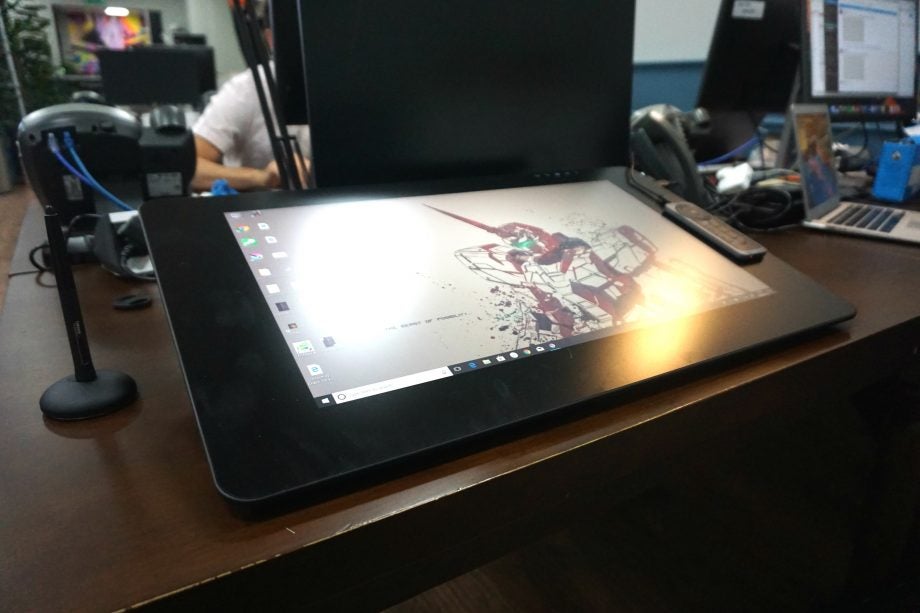
Verdict
Pros
- Stylus is the best available
- Express Key remote is excellent
- Solid colour gamut coverage
Cons
- Stupidly expensive
Key Specifications
- Review Price: £1900
- Dimensions: 677 x 394 x 47mm
- Wacom Cintiq Pro Engine support
- Express Key Remote
- Wacom Pro Pen 2 stylus
- 24-inch, 16:9, IPS, UHD screen
What is the Wacom Cintiq Pro 24?
The Cintiq Pro 24 is the latest big-screen monitor from Wacom. The behemoth device is bespoke built for creatives and is, believe it or not, the smaller option in Wacom’s next-generation line of Cintiqs – it sits below the 32-inch model set for launch later this year.
Featuring an excellent screen, industry-leading stylus and support for Wacom’s Pro Engine – which turns it into a standalone PC – the Pro 24 is an artist’s dream. My only quibble is that Wacom is still insisting on charging significant sums for all the optional extras that creatives will need to fully take advantage of the new Cintiq.
With pricing for the monitor portion alone setting you back a hefty £1900, and the optional Pro Engine an extra £2400, the Cintiq Pro 24 is a seriously expensive luxury.
Related: Best monitors
[videoai]Wacom Cintiq Pro 24 – Design and setup
The Cintiq Pro 24 isn’t a subtle bit of kit. The giant screen measures a whopping 677 x 394 x 47mm and, unlike most all-in-ones or displays, is designed to be sat flat on a desk – like an artist’s easel. As such, it’s likely to take up a whole desk all on its own, leaving little space for a mouse or keyboard, let alone a desktop computer, to sit next to it.
It’s also fairly clunky-looking compared to competing all-in-ones, such as the Surface Studio and 4K iMac. The latter two both sport beautiful mixed-metal designs and dinky bezels that make the all-black Wacom look a little dull.
However, from a productivity perspective the Cintiq Pro 24 ticks all the right boxes. The feet on the rear stand feel robust, and are more than solid enough to take heavy pressure. Working on a large comic page the device suffered no flex, even when I was leaning heavily into it.
The only downside is that using the attached feet, the Wacom is locked to sit at one angle. If you want to set the Cintiq Pro at any other angle, or set it up as a regular monitor, you’ll have to invest in Wacom’s Ergo Stand. This adds over £300 to the price.
Connectivity is excellent. You’ll find twin USB 3.0 ports on its right and left sides, plus a standard 3.5mm jack and full-sized SD card slot. Round the back is another USB-C port plus HDMI 2.0, DisplayPort and USB-A connectors.
Be warned, though: if you plan to pair the Cintiq Pro 24 with the Wacom Pro Engine then you’ll lose access to its rear ports. The Pro Engine is an optional extra that turns the Cintiq into a fully functioning all-in-one PC. It’s connected using the screen section’s rear ports.
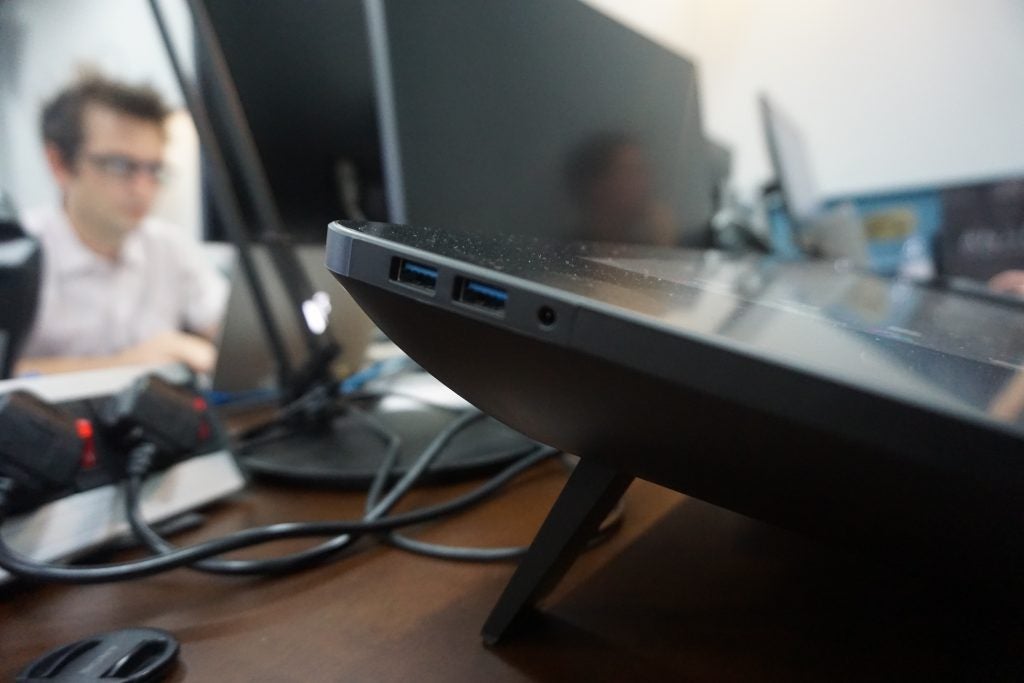
The Cintiq comes with the same Wacom Pro Pen 2 stylus that debuted on the MobileStudio Pro. The pen remains a key selling point and offers a staggering 8192 pressure sensitivity levels. The Surface Book’s Surface Pen has a meagre 1024 by comparison.
As before, the pen offers the best drawing experience available. It’s super-accurate and works with a multitude of software packages that range from popular professional suites such as Photoshop and ZBrush, to freeware such as Krita and Blender. Doodling in Krita, I didn’t notice any latency and the Cintiq read changes in angle and pressure sensitivity without issue.
I’m also a big fan of the included Express Key Remote. The remote can either be plugged directly into the screen, using one of the side USB ports, or charged and placed on the screen cable-free using a micro-USB cable.
Once attached, it has a similar control wheel to the one found on the MobileStudio Pro. It lets you switch between layers, or adjust brush sizes on the fly, among other things. Around it you’ll find 17 customisable keys, which can all be programmed to enact specific functions on an app-by-app basis.
It’s a potent combo that makes it quick and easy to optimise the setup for your specific workflow. Within a day I’d managed to set up the remote to work perfectly with Krita – my freeware illustrating application of choice – and was blitzing through digital painting projects.
As a lefty stuck in a world of devices built for right-handers, I also found the ability to place the remote exactly where I wanted on the Cintiq particularly useful.
Related: Best desktop PC
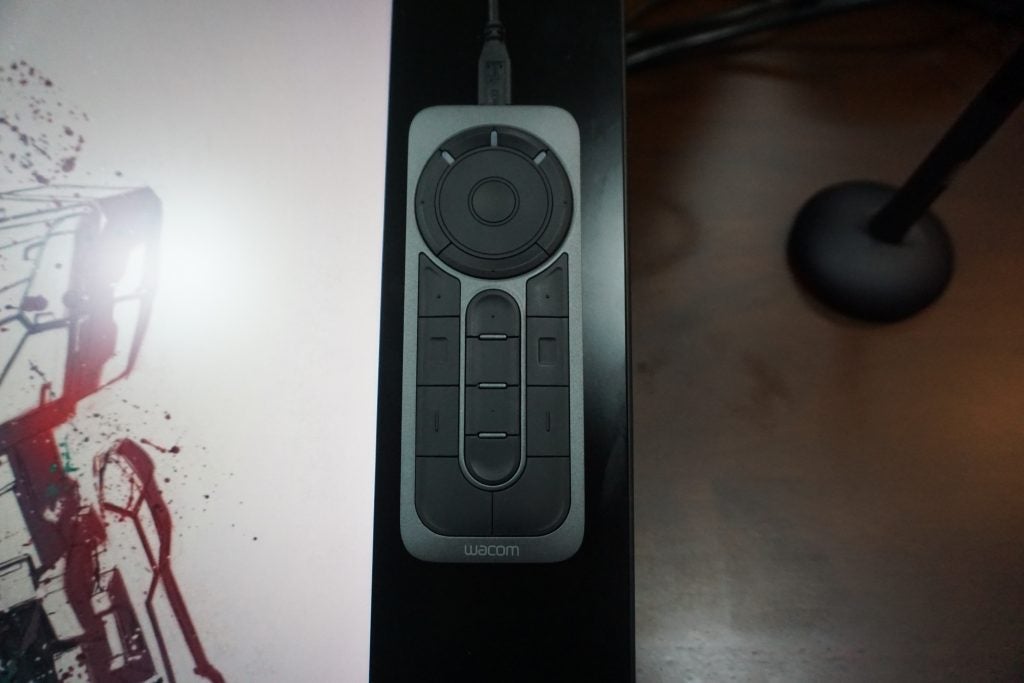
Wacom Cintiq Pro 24 – Display
The screen is, on paper, another key selling point for the Cintiq. Wacom is offering touch and non-touch versions, but both use a 16:9 aspect ratio, IPS, UHD resolution panels. Wacom claims the screen will offer a solid 1000:1 contrast ratio, 350-nit max brightness, and cover an impressive 99% of the Adobe RGB colour gamut favoured by artists.
Wacom sells its own colorimeter to help calibrate the screen, but I didn’t have one to hand while reviewing the Cintiq, so I used an X-Rite in its place.
The touch version I tested didn’t quite match all of Wacom’s claims, but it was an impressive beast nonetheless. By default the screen comes with a variety of modes targeting different colour gamuts – including Adobe, sRGB and DCI-P3 – out of the box. You can see how the screen performed in each of the modes in the table below.
| sRGB mode | Adobe RGB mode | DCI P3 mode | |
| Colour temperature | 6637K | 6601K | 6032K |
| sRGB coverage | 95.2% sRGB | 90.4% | 100% |
| Adobe RGB coverage | 63.8% | 91% | 78.1% |
| DCI-P3 coverage | 65.6% | 81.3% | 83.2% |
For an uncalibrated display the figures are generally pretty darned impressive, with the only obvious disappointment being its DCI-P3 performance – this didn’t break 85% coverage. This means that, even without manual adjustments, the screen is great for creatives working in fields where accurate colour representation is key.
Max brightness didn’t quite match the 350-nit level quoted by Wacom, topping out at 261.33 nits during my test. Using it at around 50% brightness, which is where I achieved the best gamut coverage, the screen offered a solid 0.2325 black level and 142.31-nit white level. This added up to middling contrast ratio on paper of 612:1.
Being fair to Wacom, brightness is usually the first to be sacrificed when creating displays for creatives, but the figure still puts it behind competing Windows all-in-ones such as the Lenovo IdeaCentre AIO 910, which offered a more impressive 909:1 contrast ratio. The figure also makes it significantly less vibrant than its arch-rival, the 21.5-inch 4K iMac, which offered a 532 nits max brightness and 1115:1 contrast ratio during our tests.
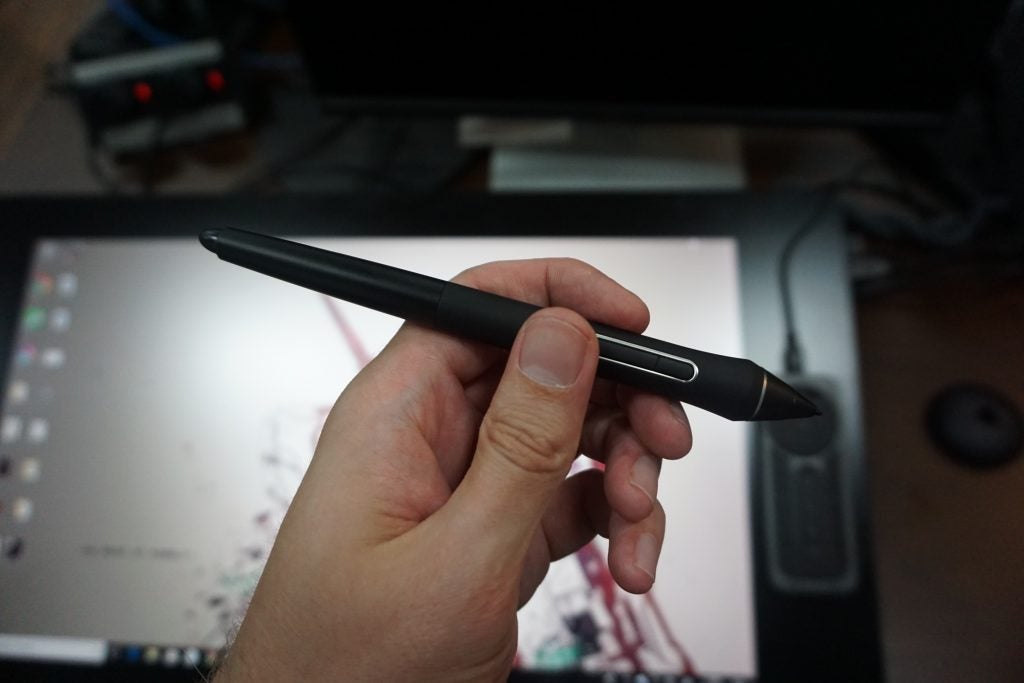
Wacom Cintiq Pro Engine – Performance
If you want to take full advantage of the Cintiq, without connecting it to an external desktop – which will take up yet more precious desk space – you’ll have to invest in the Pro Engine. Wacom is currently selling it in two versions, with varying specs. You can see a full breakdown of the two options in the table below.
| Specs | Model One | Model Two (tested) |
| CPU | Intel Core i5-7300HQ | Intel Xeon E3-1505M V6 |
| GPU | 6GB Nvidia Quadro P3200 | 6GB Nvidia Quadro P3200 |
| RAM | 16GB DDR-2400 | 32GB DDR-2400 |
| Storage | 256GB SSD PCIe | 512GB SSD PCIe |
| Ports | 2 x USB-C, 1 x HDMI 2.0, 1 x mini-DisplayPort | 2 x USB-C, 1 x HDMI 2.0, 1 x mini-DisplayPort |
| Price | £2,399.99 | £3,419.99 |
The specs are impressive, but I’m a little disappointed that Wacom isn’t offering an AMD Ryzen version of the Pro Engine. AMD’s Ryzen CPUs offer better multi-threading performance than their standard i-series Intel rivals, making them a better choice for most creative workloads. With Ryzen 2 out and Threadripper 2 incoming, I’d really like an AMD CPU option. However, the use of an Intel Xeon helps mitigate this minor quibble.
Xeon CPUs are professional-grade chips traditionally used in embedded systems, business workstations and servers. I haven’t had a chance to test many systems that feature them or directly compare them to AMD Ryzen, but the Xeon model I tested performed incredibly well during Trusted Reviews’ synthetic benchmarks. You can see a breakdown of its benchmark scores in the table below.
| Benchmark | Score |
| Geekbench 4 single-core | 4654 |
| Geekbench 4 multi-core | 15423 |
| PCMark 8 Conventional | 3509 |
| 3DMark Fire Strike | 10368 |
| CrystalDiskMark read | 1469 MB/sec |
| CrystalDiskMark write | 941 MB/sec |
The scores put it on a par with the top-specced 4K iMac we tested, which ran in with 4789 single-core and 14,054 multi-core scores running Geekbench 4, by comparison.
In the real world this means the Pro Engine is more than powerful enough for large-scale digital painting, 3D modelling, animation and video editing. While 3D modelling in Blender, I didn’t experience any performance issues using the Cintiq Pro with the Pro Engine. The same was true when painting in Krita and Photoshop.
The device’s cooling also performed admirably. Even when I was properly putting the Engine through its paces, I never experienced any CPU throttling or excessive noise from the cooling system. The SSD speeds also ensure Windows felt snappy and applications and files opened with zero lag.
The only performance issues I noticed were the result of software glitches. Very occasionally, the Cintiq Pro 24 would completely wig out and refuse to recognise touch or pen inputs, only to then enact a series of random actions in rapid succession. The issue only popped up a few times, but it was particularly annoying – especially when painting.
On a couple of occasions, the bug all but destroyed the painting or 3D model I was working on – to the point I had to reopen an older, backup version. The palm-recognition tech was similarly buggy. Although it worked fine 99% of the time, when it decided to break, it did so gloriously, turning a clean page into a Jackson Pollock-style piece in milliseconds.
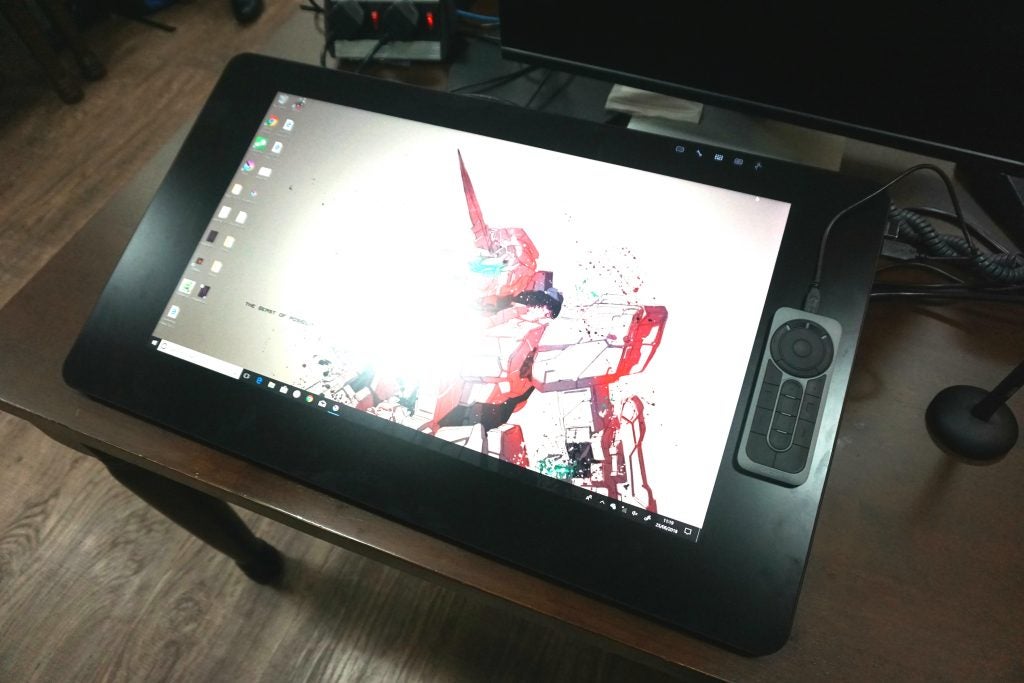
Why buy the Wacom Cintiq Pro 24?
If you’re a serious artist, designer or 3D modeller, and money is no object, you’ll struggle to do better than the Wacom Cintiq Pro 24. The giant screen offers excellent colour gamut coverage and accuracy straight out of the box, and the included stylus and remote are the best available.
However, with Wacom charging extra for the Pro Engine and Ergo Stand that you’ll need to fully take advantage of the screen section, the new Cintiq is extortionately expensive – especially if you don’t already own a powerhouse PC capable of running demanding creative workloads.
Verdict
The ultimate choice for artists, but it’s ludicrously expensive.


